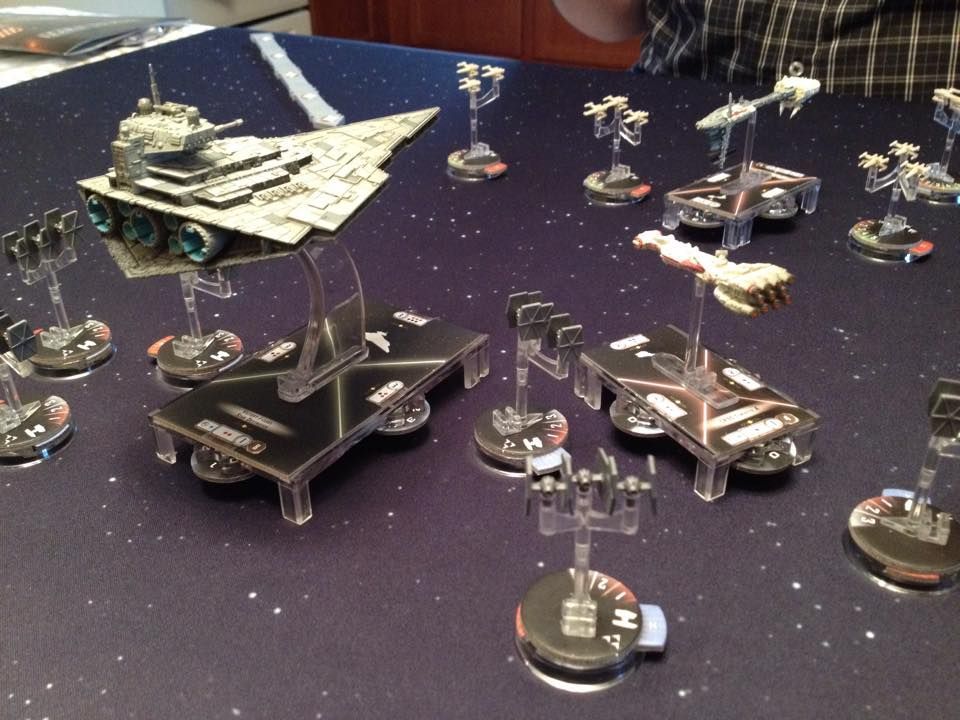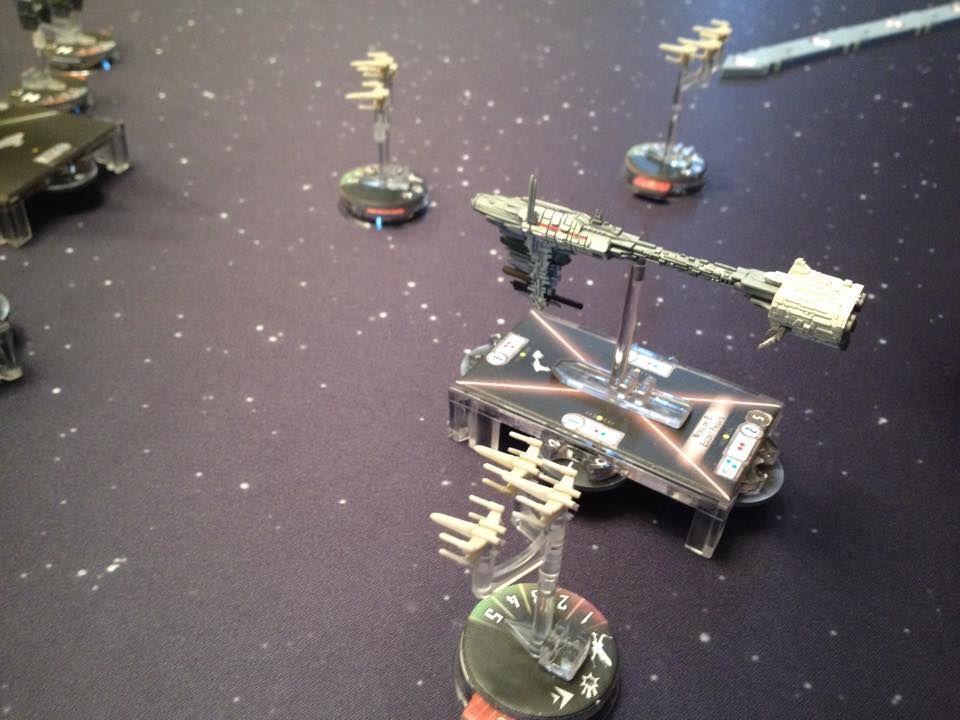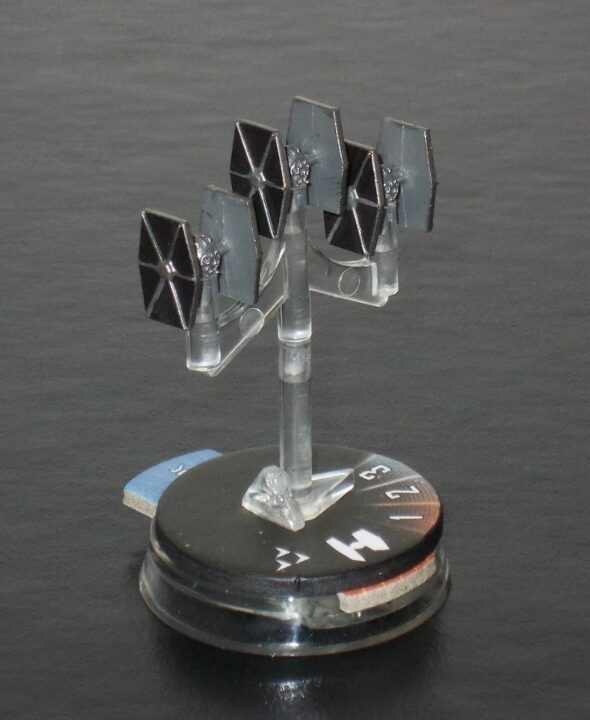Overview
Embarking on the interstellar journey that is Star Wars: Armada takes tabletop warfare to the vast expanse of space, where strategy and grand-scale fleet battles reign supreme. This review delves into the heart of the game, a saga where the deft command over prodigious fleets is just as crucial as the electrifying social interplay it fosters. Whether you’re a tactician seeking the deep intricacies of ship positioning or a social butterfly thriving on multi-player camaraderie, Star Wars: Armada balances these elements masterfully, promising adventures that linger far beyond the boundaries of its beautifully-crafted universe.
How It Plays
Setting up
In Star Wars: Armada, players begin by assembling fleets using their available ships, squadrons, and upgrade cards, all within a predetermined point limit. Each side chooses a faction, the Galactic Empire or the Rebel Alliance. They arrange the play area by positioning obstacles and setting their ships’ starting locations on the standard 3×6 foot play area—customarily guided by the game’s setup rules. Fleet commanders are equipped, and objective cards, which influence play strategy and scoring, are selected.
Gameplay
Gameplay ensues in a series of rounds, each with four primary phases: Command, Ship, Squadron, and Status. During the Command Phase, players secretly assign command tokens to their ships, representing orders they’ll execute in later phases. The Ship Phase has players activate their capital ships one by one, combating opponent vessels using the game’s unique maneuver tool and custom dice which simulate the grandeur of space warfare. The Squadron Phase allows the control of fighter squadrons, further developing the strategies on the field. Post-battle maneuvers, the game progresses to the Status Phase, refreshing exhausted cards and prepping for the next round.
Winning the game
Victory is metric-based, scored by comparing the total points of destroyed enemy ships and squadrons against the game’s objective outcomes. Balance between aggressive tactics and savvy command use is a thrilling challenge, and achieving a greater score than your opponent by the game’s conclusion heralds the win, ringing true to the struggles dominant in the Star Wars universe. Strategy, foresight, and tactical acumen are vital in claiming space supremacy.
Want to know more? Read our extensive strategy guide for Star Wars: Armada.
Designing for Galactic Supremacy
When I first dived into Star Wars: Armada Review, I was fascinated by the strategic depth of fleet building. Initially, I overlooked this critical stage, amassing ships which merely looked cool together—a quintessential rookie mistake. Quickly, I learned fleet building is a delicate art needing as much thought as battle tactics.
The Synergy Shuffle
Remembering my initial play sessions, I recall the intrigue of finding synergies between ships and squadron units—the combination of Rebel Nebulon-B frigates with X-wing squadrons was a game-changer. Understanding and exploiting these synergies separates the fleet admirals from the amateur tacticians.
Point Allocation Acumen
Mastering the nuanced budget of command points for ships and upgrades while contemplating your adversary’s likely strategy adds yet another layer. This careful consideration of point allocation underpins your fleet’s effectiveness in the ensuing clashes.
With the foundation of a formidable fleet in place, my gaze now turns to the vastness of space for spectacular Capital Ship Scale Battles, where strategy meets spectacle.

Immersive Galactic Showdowns
Delving into the Star Wars: Armada review realm, we cannot skim over the epic scale of the capital ship battles, the heart of this thrilling board game. There’s something quite mesmerizing about laying down a Star Destroyer on the mat, its detailed model casting a menacing silhouette. During my first encounter with these behemoths of space, their sheer size on the table translated into an overwhelming sense of responsibility. Every move held the weight of a galaxy at war.
Tactical Movement
Furthermore, the tactical movement is a dance with inertia. Learning to effectively maneuver your fleet can often tip the scales of victory. I recall one session where a well-timed banking maneuver—calculating drift and all—allowed my humble Nebulon-B frigate to evade an otherwise devastating broadside. Transitioning between cautious advances and aggressive assaults requires foresight—a chess game among the stars.
Commanding the Fleet
Equally, the command stack system adds exceptional depth to your fleet’s actions. It encapsulates the complexity of managing a colossal starship while under fire. Deciding between repairing critical systems or laying down a barrage of turbolaser fire is the kind of decision that echoes through subsequent turns. The thrill of such decisions set the stage for narratives that are relished long after the final ship has warped away.
With the afterglow of conflict still warming the room, we find our conversation turns to the intricacies of multiplayer engagements—a topic that I eagerly anticipate discussing next in our Star Wars: Armada review series.

Tactical Alliance Dynamics
There’s an aspect of Star Wars: Armada that elevates it from good to great: multiplayer interaction. This is the beating heart of the game’s social play where alliances are as fluid as they are fragile. I remember one particular session where deceptions were especially rampant; a shaky alliance crumbled as a Star Destroyer I thought was ‘friendly’ turned its guns on me! Such unpredictability makes every play rich with potential.
Friendship and Rivalry
The alliances aren’t the only things noteworthy: the rivalries spark even more excitement. It’s amusing how co-players become momentary adversaries, fueling tensions that bring glee even in defeat. Grudges form and dissolve in the span of an hour; it’s politics unfolding on a galactic scale.
Mechanics Meet Social Play
As much as Star Wars: Armada Review is about ships and strategy, it’s these multiplayer interactions that truly shape the game’s flavor. You’re not just commanding a fleet; you’re engaging in a diplomatic dance amidst star-fleet warfare. Considering this, do I recommend Armada? Absolutely—especially if you’re keen to engage both your strategic mind and social wiles.

Conclusion
Bringing our foray into the vast expanses of ‘Star Wars: Armada’ to a close, this review has covered the strategic complexity, the grandiosity of fleet combat, and the critical role of multiplayer engagement. Throughout the game, players experience the intricacy of strategic fleet building, the intense magnitude of capital ship scale battles, and the nuanced depth of multiplayer tactical interaction. Each session unfolds uniquely against this rich tapestry, ensuring no two games are alike, and the excitement is as renewable as it is unforgettable. From the careful selection of ships, pilots, and upgrades, to the tactical choices made in the midst of epic space clashes—all the while navigating the galaxy of social competitiveness and camaraderie—Armada delivers an immersive gaming experience that encapsulates the beloved Star Wars universe with precision and flair. To conclude, the journey through ‘Star Wars: Armada’ is a compelling blend of strategy, social interaction, and thematic complexity that I highly recommend for enthusiasts looking to command their fleets and change the course of galactic history.


